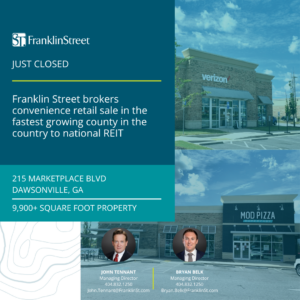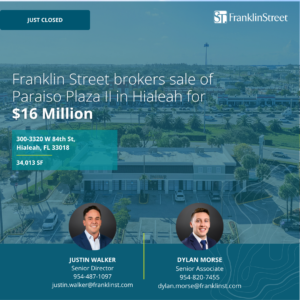When Barbara J. Gaffen, co-CEO of Northbrook, Ill.-based Prime Property Investors, heard about the latest deal coming out of Chicago, she almost couldn’t believe her ears.
Heitman, the Chicago-based global real-estate giant, had agreed to buy a 60-story, 504-unit luxury high-rise in the Loop for $328.2 million, or $651,000 per door, from the Related Companies. According to Real Capital Analytics (RCA), at that price, the property known as OneEleven became the highest per-door sale of any large apartment building ever in Chicago.
Hearing the numbers, Gaffen was baffled.
“I mean, what was the cap rate there? Is there a cap rate there?” Gaffen asked. “You’ve got people paying $5,000 a month to live in a two bedroom apartment—in Chicago. I just don’t know how that works. But obviously, with all the foreign capital in this market, these foreign investment funds have the money, and they have an extremely long-term investment horizon. Those funds are looking at 30 years or more.
“But that’s certainly not how we do it.”
Shock Appeal
Gaffen’s slack-jawed reaction to the deal is typical of apartment investors watching the market today. Namely, many experienced, long-time pros see the deals happening around them and wonder how high prices can soar, and how low cap-rates can go.
“You take New York City, just to keep it simple,” says Michael Weiser, president of New York-based GFI Realty Services. “Every day you see a new high in pricing, and a new low in cap rates. Almost every day you come to work, you see something that’s absolutely shocking.”
He points to the recent $150 million asking price for the penthouse at 550 Madison Avenue in the former Sony Building. At 21,504-square-feet (with a total of 18 toilets), it’s the most expensive listing of an apartment ever in Manhattan.
Then, there were the two deals in Brooklyn that GFI brokered at 147 Ocean Avenue and 115 Ocean Avenue, which had cap rates of 3.7% and 3.1%, respectively. The sales prices amounted to 19 and 21.5 times annual rent role for the buildings, records for that submarket.
“Can cap rates go lower? Absolutely. We think they can,” Weiser says. “For how long? Well, I wouldn’t be silly enough to make a prediction about that.”
According to RCA, while cap rates for all apartments in 2014 averaged 6.1%, for properties in the top 10% of the nation’s top markets, they were 3.5% or lower. “The premium for the best properties continues to grow even as much capital has moved into new markets in search of higher yields,” RCA reported. And the pace hasn’t let up. January 2015 sales volume was up 42% year over year, with overall cap rates inching down another 10 basis points.
A New Normal
But while few expect that compression to stop, those low-slung cap rates have begun to fundamentally change certain aspects of the apartment market, and the traditional mores by which many investors have operated for years. Namely, the risk premium—the spread between interest rates and cap rates, and the extra return that investors gain for putting their money into apartments instead of “zero risk” Treasury bonds—has started to disappear. Indeed, for some of the money coming into the apartment market, it simply doesn’t even matter anymore.
“Risk premium over a certain cap threshold has become slightly irrelevant over the past 24 months,” says Kurt Westfield, managing director of Tampa, Fla.-based WC Equity Group. “Roughly 50% to 70% of the deals we’re seeing are cash. Value add opportunities provide all the risk premium investors want.”
Those elements have changed not only pricing in the apartment market, but what buyers are looking for in the first place.
“Overseas investors are experiencing the slowing economies in China, Europe and the rest of the world,” says Giovanni Isaksen, CEO of Bellingham, Wash.-based multifamily advisory Ashworth Partners. “They’re looking to move wealth to a more stable, secure market. Many of them aren’t looking to ‘make’ money so much as not to lose it. It really puts domestic investors looking for any kind of yield in a tough spot.”
Jay Madary, CEO of Oak Brook, Ill.-based JVM Realty Corp., owner and manager of approximately 4,300 units, sums it up thus: “International equity may have investment objectives that aren’t motivated by yield alone.”
Gary Goodman, senior vice president for acquisitions at Irvine, Calif.-based commercial real estate investment firm Passco Cos., notes that while the current spread on the risk premium has been shrinking, depending on what deals you consider, it could get slimmer still.
“If Treasuries are at roughly 2%, and cap rates are arguably around 5% on average, that’s still 300 basis points,” Goodman notes. “There have been times when it was higher—as recently as 2012 it was about 450 basis points. But back in 2006, there was only about a 100 point spread. So theoretically, it could still come down quite a bit more.”
Of course, if interest rates increase in 2015 as many expect, that could squeeze it further. Historically, when interest rates go up, so do cap rates. But many now wonder, with the flood of foreign cash chasing deals, if that will necessarily be the case now.
“Remember, everyone has ‘known’ interest rates will go up for three years now,” says Isaksen. “But the fundamentals still haven’t changed. Cap rate spreads could hold much longer than anyone expects.”
Pro Forma Darlings
Cap rate compression, coupled with rent velocities that reached a 41-month high at the end of December, according to Dallas-based apartment research firm Axiometrics, has also led to a trend of increased pro forma consideration for potential deals. For instance, while RCA’s cap rate numbers look at the trailing 12-month period, most buyers will consider a property based on next year’s projected rents.
“When you hear those third-party numbers, I think it’s hard for anyone to hone-in on what the actual rate is right now for a given transaction,” says Todd Stofflett, managing director at Chicago-based brokerage Kiser Institutional Group. “Because I will tell you, buyers and sellers look at them completely differently. If we’re talking a Class B, value-add property in suburban Chicago, my seller might look at trailing 12-month numbers and say it’s a 6 cap. But my buyer is going to look at it off of their year one pro forma and put a 6 ½ cap on it. That cap rate is just a perception based on who’s doing the modeling.”
While using pro forma numbers is an accepted and widespread practice, especially for value-add properties where NOIs can get a quick boost from increased rents or reduced expenses, it’s also not the most conservative way to look at a deal.
“We’re always concerned about where cap rates are in terms of trailing numbers,” Goodman says. “That’s fundamentally how you want to price your real estate, because the rental growth in the future is somewhat subjective. On the other hand, if you’re confident you’re going to get some rent growth, then you’re generally willing to pay more, and cap rates are going to go lower.”
A Fear of Missing Out
Of course, with rents projected to continue to increase in 2015—albeit at a slower rate—that type of assumption still makes sense. And demographic, supply and homeownership data all suggest demand for apartments will remain strong through 2015 and beyond. It is still worth noting, however, that the single family housing bubble inflated itself with a similar logic: Increasing home values would allow owners to refinance at better terms in the future. Until they didn’t.
While multifamily lending standards aren’t anywhere near the atmosphere of the single-family crash—“That was buying with a zero cap rate,” notes PPI’s Gaffen—using pro forma numbers on a prolonged basis means someone, at some point, will guess wrong.
“Eventually, someone will overpay and not be able to obtain a profit,” says Matt Krauser, senior managing director at New York-based commercial real estate research firm Integra Realty Resources. “But the thinking is that investors will see a breakdown in the fundamentals before that point and sell off their assets with a profit.”
For that to happen, though, investors will need to see the sell off before it comes. “The hardest part of the equation right now is the exit strategy underwriting,” says Darron Kattan, managing director at Franklin Street Real Estate in Tampa, Fla. “Trying to figure out where we will be in five, seven or 10 years from now is an art form, and in order to make these models work, people have to make very aggressive assumptions. By the same token, with the tried and true motto of ‘other people’s money,’ I sense caution is secondary to doing deals for a lot of people.”
After all, in this market, being cautious could mean missing the boat entirely.
“When you look at the recent rent data, coupled with the demographic and lifestyle trends, people aren’t thinking about what they’ll do if they have to get to the sidelines quickly,” says Bill Baumann, senior managing director at Chicago-based brokerage Kiser Group, (no affiliation with Kiser Institutional Group). “They’ve got a much bigger fear of missing out on the ride in the first place.”
Can cap rates go lower?
Just watch.



